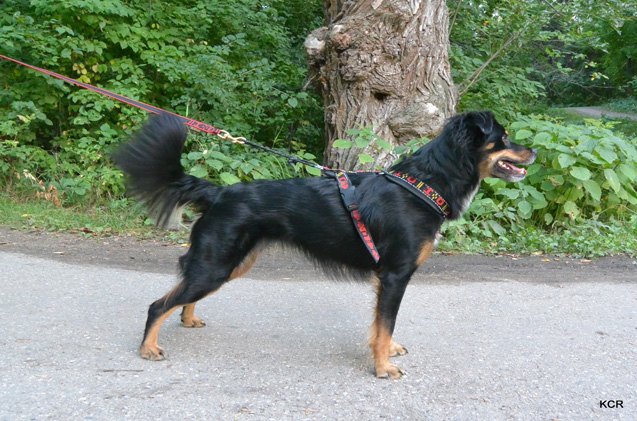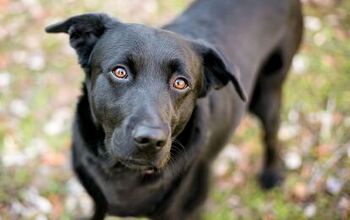Beat the Heat: Tips for Canicrossing in Hot Weather

Running your dog in the summertime needs extra special consideration. With hard exercise and heat, even the most fit of dogs can quickly overheat, suffering from distress and heat stroke.
Heat stroke occurs in dogs when the dog’s body is not able to dissipate the excessive external heat. It’s your job to learn the signs, which may include: excessive drooling, increased body temperature (over 103° F (39°C), uncoordinated movements, dehydration, rapid heart rate and shock. Each dog will present differently.
An Ounce of Prevention
It’s much easier to prevent heat stroke than it is to treat it. But if your dog is displaying any signs of heat distress or heat stroke, get them out of the hot environment immediately. Begin to run cool, not cold, water over their body. Add an ice pack to their head – this will help to safely lower body temperature. Massage his legs to keep the blood flowing and reduce shock. Get your dog veterinary care immediately. In its most extreme stages, heat stroke can cause swelling of the brain, blood clots and kidney failure.
Related: Why Your Dog Needs To Warm-Up Before Canicross Workouts
How Hot is too Hot to Canicross?
Well, that depends. Online there are all sorts of calculations and rules about when it’s too hot to train. These are generalizations at best. The fact is there is no one rule, as conditions vary by region, and each dog is affected differently. I live in the land of extremes and if I followed the online advice, it would be too cold to run my dogs for most of the winter, and too hot to run them all summer. This means that we would never get out. Sure, there are times it’s simply too hot to run them, or even take them for a walk, but I know my dogs and the climate we live in.
Bottom line, it’s best to err on the side of caution. If you’re unsure if it’s too hot to train that day, leave your dog at home. As hard as it is to leave a dog at home, think of how much harder it would be to face your dog suffering from heat stroke… or worse.
Related: Dog-Powered Running: Get Fit With Canicross
Hitting the Pavement
I’m not a fan of running dogs on pavement in the first place. Pavement can be hard on a dog’s feet and joints. But in the summer, pavement holds the heat, and your dog is running a lot closer to it than you are. The evening air up where you are breathing might seem cool and good enough for a run, but pavement holds the heat from the sun well into the evening. It’s not about running on the dog’s paw pads, it’s more the fact that it’s warmer down there!
A much better option is to find a cool wooded track to run on. Look for a dirt trail, with plenty of shade. No trails nearby? You might want to consider a different sport, or limit your canicross runs to days when it will be safe enough for your dog.
Glorious Water
Offering your dog plenty to drink before a run is an awesome idea, but some dogs don’t drink enough to combat the heat. A simple trick is to bait your dog’s water, to tempt them to drink. Do this at least an hour before you plan to go for a run. Simple baiting tricks can include the juice from canned tuna, the water from boiling hot dogs or even a small scoop of sugar-free vanilla ice cream. Avoid anything with high sodium content, as they can work to dehydrate your dog.
My dogs enjoy running trails with each access to water. But be cautious of swimming in harness. Some harnesses are too long to safely swim in, meaning your dog can get a leg caught or tangled while swimming. Swimming spots with hidden dangers like logs or jagged rocks can also catch on a harness. So while a swim is a great way to keep your dog cool during a workout, do so with caution.
Running on Time
Early mornings are better to run than later evenings. Avoid mid-day, when the heat of the sun is at its most powerful. Early mornings tend to be better, as the cool air of the evening is still around. But mind the humidity as well. Dogs with thicker coats, older dogs, and dogs with short muzzles all will be more affected by the humidity in addition to the heat.
Know Your Dog
Ultimately, you, with the help of your veterinarian, are the one who is best qualified to make the decision on when it’s too hot to canicross with your dog. Remember, even the best conditioned dogs can easily succumb to the dangers of heat.

Kevin Roberts lives for adventure. Together with his pack of rescue dogs and his husband, he spends as much time outdoors as possible. Kevin lives by the motto: "Get outside and play with your dogs!
More by Kevin Roberts
























